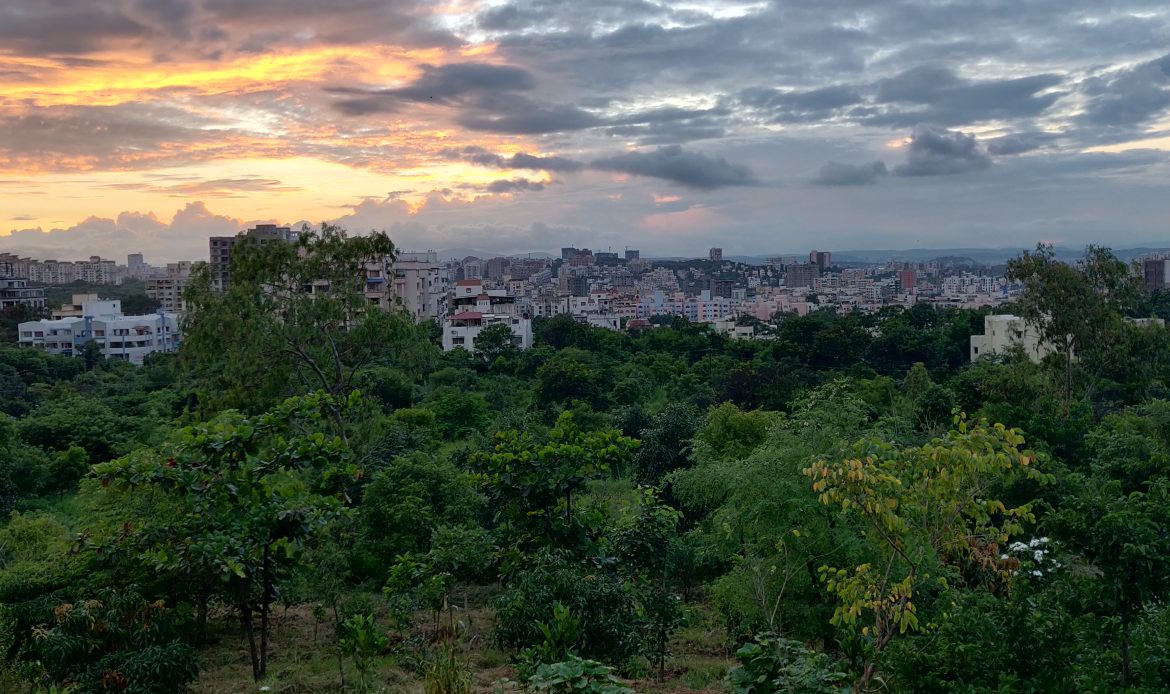
Anandvan Urban Forest
These projects are targeted at land parcels that are large in size, starting from a few acres to hundreds of acres, in and around cities. Our projects so far have been on reserve forest land that is owned by the Forest Department. We are open to work with Government Departments and Establishments, Armed Forces, private landowners such as Industries, Educational Institutes or Charitable Trusts.
We execute such projects in following phases:
Land parcel identification, survey and evaluation.
Surveying the land not only involves locating and measuring the graphical and physical layout of the land parcel but also establishing complete details regarding the legal boundaries, perimeter security, existing flora and fauna, type of terrain, land features, water harvesting potential, amount and type of human activity, socio-economic conditions of neighborhood etc. All these inputs form the basis of the next step of planning by our project management team.
Project planning and estimation.
Our project management team creates a plan for the “Urban Forest” taking into account all details collected during the survey phase. Planning includes identifying a theme for the Urban Forest, Identifying different zones and the type of plant species to be planted, location of water tanks and layout of irrigation pipes, creation of unique attractions. The focus is always to transform the land parcel into a biodiversity rich Urban Forest that not only helps us battle climate change but also adds beauty and brings wellness to residents of the area .
Fundraising
Through our journey we primarily crowd sourced funds from members and well wishers of Anandvan Foundation but as of today we are also working with corporates under their CSR initiatives to increase scope and velocity of our projects.
Site preparation
Site preparation includes:
- Ensuring any breaches in perimeter walls are closed. Installation of security gates and appointing security personnel.
- Cleaning the land parcel of plastic, filth, glass, construction waste and any kind of garbage dumped on the site.
- Water conservation and management measures such as creation of CCTs (Continuous Contour Trenches), Percolation pits, Tanks, Low cost Ponds (Shet Taal), Laying pipe lines and installing taps.
- Creation of pathways for movement of humans and where required heavy vehicles such as tankers, Earth moving machines.
- Digging pits for plantations. This is done well in advance so that the pit is exposed to sun and rains that leads to release of minerals specially where we have Moorum soil which is common to Pune region.
Plantation
Based on our experience nearing a decade of creating urban forests we have perfected our unique way of planting which gives us a greater than 90% survival rate of the saplings. We factor in various things as per the theme of the Urban Forest in our plant selection e.g tree species attractive to different types of birds, fruit bearing trees, flowering trees that attract bees and butterflies, trees of cultural significance, trees of medicinal significance etc.
Nurturing and Monitoring
Plantation is the most highlighted or shall we say glamorous part of the process but the real back breaking efforts go towards the round the year nurturing of saplings so that the saplings become healthy trees and an ecosystem comes together around them. Nurturing involves the following:
- Watering: The saplings require regular watering in first 2-3 years of their growth in all months except rainy season. We create ponds, tanks, lay pipelines to facilitate watering. Our volunteers and staff ensures saplings are watered at regular intervals to ensure survival and growth.
- De-weeding: After rainy season as the winters set in the tall grasses and invasive plants that grow during monsoon start cramping out the saplings. Our volunteers do de-weeding to get rid of such unwanted growth to ensure the sapling gets the necessary sunlight and nutrition.
- Mulching: During winters we take up the task of creating circular mulch beds around each plant to provide them with nutrition through mulch and manure
- Fire Prevention: Our forests being Urban are prone to fires due to human negligence or sabotage. We have to be constantly on guard to prevent fires and minimize damage when they occur. We create fire-lines and take out dry and tall grasses from our land parcels to reduce chances of fire
